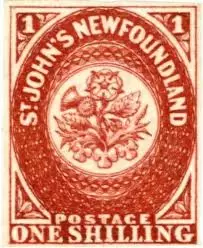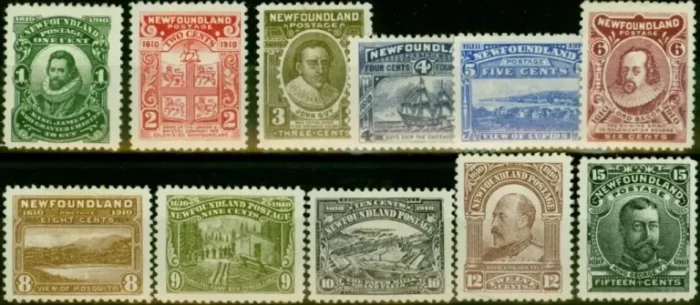
Before 1809, all mail to and from Newfoundland was handled through private arrangements with individuals, primarily sea captains, who agreed to transport letters and packages by sea for a fee. Given the scarcity of roads across the island, most domestic mail within Newfoundland also traveled by boat, with delivery relying heavily on the integrity of the ship’s captain.
On October 24, 1809, Governor John Holloway appointed Newfoundland’s first postmaster, Simon Solomon, a local watchmaker and jeweler. Solomon’s responsibility was to handle all mail to and from the colony. He was authorized to collect three cents for each letter, with one cent going to the captain of any vessel delivering the mail and two cents to himself for his services.
Although Great Britain issued the first adhesive postage stamp in 1840, it wasn’t until 1857 that Newfoundland issued its first stamp, which it continued to do until 1949. The last postage stamp issued by Newfoundland was in 1947 to commemorate the 450th anniversary of John Cabot’s discovery of Newfoundland in 1497. Postage Due stamps continued to be printed until 1949 when Newfoundland joined Canada. The first stamps were printed by Perkins, Bacon & Co. of London, England, followed by The American Bank Note Company, and later by printing companies in Montreal and Ottawa.
Newfoundland’s stamps serve as a comprehensive historical record of the country’s major events until its integration into Canada in 1949. Every significant milestone in Newfoundland’s development is featured on its stamps, making them unique and valuable educational tools.
The earliest stamp issued by Newfoundland was the Pence issue, featuring a combination of the floral emblems of England, Ireland, and Scotland. Queen Victoria and Prince Albert were the first individuals to appear on Newfoundland stamps, eight years after the first stamps were issued. Forty years later, Newfoundland issued its first commemorative stamps, marking the 400th anniversary of John Cabot’s discovery and the 60th anniversary of Queen Victoria’s coronation.
Numerous Newfoundland stamps commemorated events such as World War I, the first non-stop transatlantic flight, and the first airmail stamp. These stamps provide a vivid depiction of Newfoundland’s rich history.
All Newfoundland stamps were monochromatic, featuring different shades or values of the same color or hue. Originally, they were not perforated but printed with space between them, allowing individual stamps to be cut from the full sheet with scissors.
The Newfoundland Post Office evolved over the years, with Simon Solomon serving as the first postmaster. The post office was initially housed in various locations, eventually moving to Market House Hill on Water St. in 1850 and then to a new structure in 1886. After Newfoundland joined Canada in 1949, plans were made to replace the old post office building with a modern facility integrated into the Canadian postal system.

